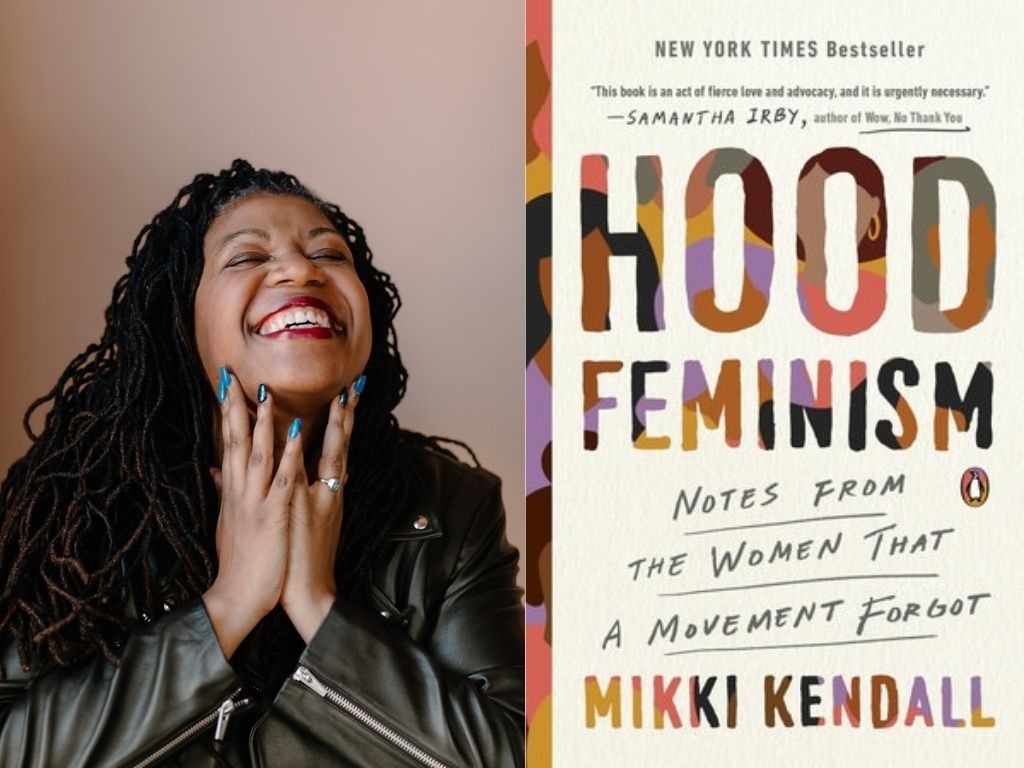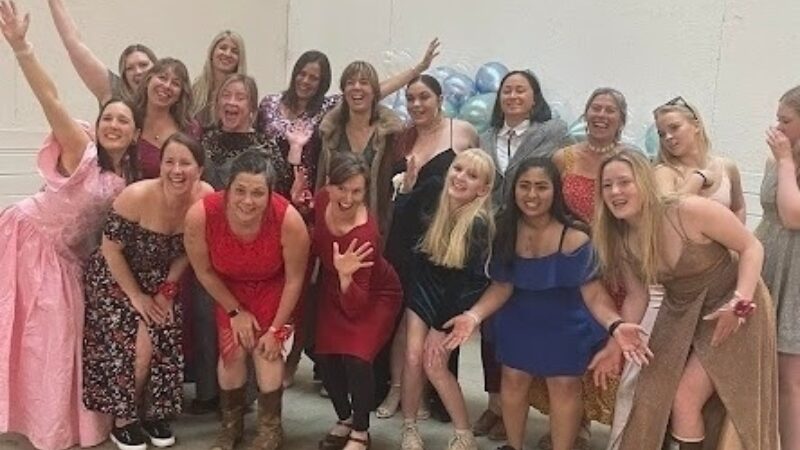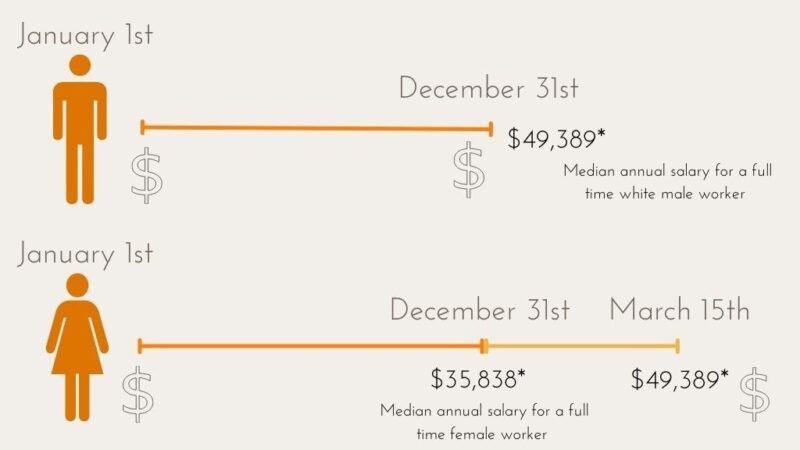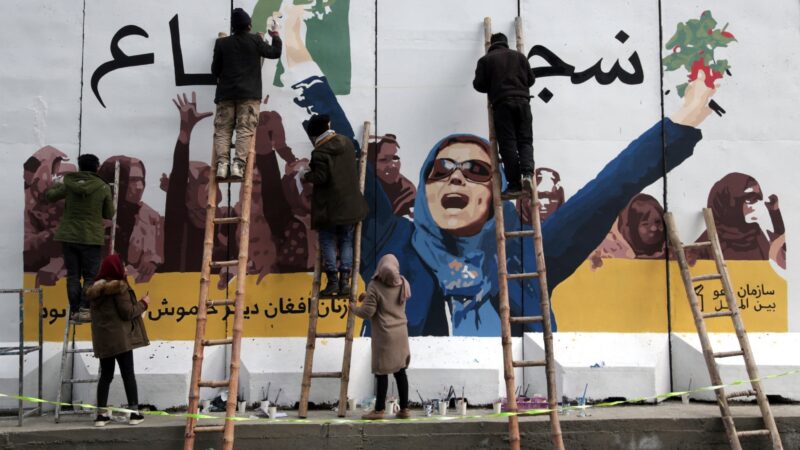PowerHouse Blog
Humbled to Listen: Lesson’s from Hood Feminism by Mikki Kendall
April 28, 2022 | By Kelly Curtis

“Hood Feminism,” was published in 2020 by activist and cultural critic, Mikki Kendall. It covers issues of food, housing, gun violence, schooling, domestic violence, and feminism in the United States and how each of these issues is experienced in vastly different ways for women of different racial groups.
As someone who has always considered myself a proud and loud feminist, Hood Feminism made me question my feminism and whether it in fact was about solidarity with all women or if I unintentionally was excluding other women and their experiences from my vision of gender equality. Although I, or any feminist person hopefully, would not intentionally exclude others from the feminist movement, Mikki Kendall points out that the long history of feminist waves in the U.S. has frequently excluded Black, Indigenous, and women of color from national platforms. They haven’t always recognized problems such as hunger, housing, and poverty as issues that women fight, feel and experience in deeply gendered ways.
Below are some of my thoughts on the book and excerpts from “Hood Feminism” that helped stretch my feminist understanding of issues women face.
HUNGER
Chapter 3 focuses on hunger and Kendall’s experience with it after leaving an abusive relationship with her young child and needing food assistance programs to help her cover the gaps in her income.
Looking back on her experience she says, “I remember being afraid that I couldn’t make it. That I would lose my child because I couldn’t provide. It is hard to take a rich woman’s children; it is remarkably easy to take a poor woman’s, though. As a society, we tend to treat hunger as a moral failing, as a sign that someone is lacking in a fundamental way.” (pg. 32).
Kendall points out that the perspective of people on food assistance is one of someone trying to “game the system” or someone who is “lazy” and trying to “get out of work,” but about 40% of Supplemental Nutrition Assistance Program (SNAP) recipients are already working and need the program to supplement gaps in their salaries (Pg 43). SNAP does not cover medication, toothpaste, cosmetic items (like deodorant or body wash), vitamins, soaps, pet foods, cleaning supplies, diapers, baby food, formula, or hot pre-prepared foods (like rotisserie chicken for example). All things most households need a small amount to function.
The remaining 60% of SNAP recipients are not eligible to work because they are children (minors), the elderly, or individuals who are full-time caregivers to vulnerable or disabled family members. Another commodity that is difficult to come by if you’re already working and it’s not enough to cover your bills? Time. Buying, finding, preparing, and storing foods all take time and resources many families don’t have.
“Without support from feminists with privilege and access, families facing food insecurity will suffer despite their best efforts. Hunger saps your energy, your will; it eats up the space that you might have used to achieve with the need to survive. As feminist issues go, there are none that span more women and their families than this one.” (pg. 45)
Missing and Murdered
Missing and Murdered Indigenous Women, Girls and Two-Spirit (MMIWG2S) is a common topic of conversation in Montana as this epidemic continues to spread across our state. Native persons make up about 7% of the state’s population but comprise over 26% of missing person cases, with over 70% of those cases being missing minors who sometimes have gone missing more than once (Montana Free Press, 2021). Kendall, in the first few pages of this chapter, highlights another similar crisis that affects Black Americans, noted in a statistic from the FBI National Crime Information Center, “despite being only 13 percent of the total population, Black Americans account for an average of 34 percent of all missing persons every year.” (149)
Kendall dryly points to the infamous Missing White Woman Syndrome that happens with many missing person cases when white people, especially when white women go missing. A prime example is the Gabby Petito case which generated thousands of hours of media coverage and made national headlines quickly after she was reported as missing. Kendall points out that of course anyone that goes missing should have the level of attention the Petito case gathered, but that for women of color, especially Black and Indigenous women, it often takes grassroots efforts and frequent demands by concerned families and friends to get their missing loved ones even assigned case numbers.
“A study by the Urban Indian Health Institute showed that of the 5,712 cases of missing Indigenous women reported in 2016, only 116 were logged into the Department of Justice database. Data analysis also shows that come countries had murder rates of Indigenous women that were more than ten times the national average. Unfortunately, the quality of this data is limited by the willingness of individuals to report violence to police and of law enforcement to designate deaths as homicide. A 2014 study in the American Journal of Public Health on causes of death in Indigenous American communities using data collected between 1999 and 2009 found that Indigenous women have a homicide rate triple that of white women.” (pg.150)
Kendall uses this chapter to remind us that unless we collectively examine the privilege that women have or lack, racism in searching for lost loved ones and uneven treatment in death will continue to be a major problem. When we’re exclusively focused on who gets the most media attention, we remove the focus on intimate partner violence against women, which disproportionately affects women of color. Women who are disabled, stay-at-home primary caregivers, queer or transgender also face extremely prominent levels of violence, which is only compounded if they are Black, Indigenous, and people of color (BIPOC). For women who have multiple historically marginalized identities, distrust in policing means that it is the internal community that bands together.
For Indigenous Nations, jurisdiction laws can complicate the prosecution of perpetrators. Perpetrators against Native women are most frequently men who live outside of reservations and thus cannot be prosecuted by tribal law. Involving police over a crime that happened on reservation territory and that involve a native citizen and a non-native person complicates an already frequently traumatizing legal process, and prosecution, based on the assault, may never actually happen. Fortunately, the Violence Against Women Act (VAWA), which was renewed in April, grants new powers to tribal courts to prosecute non-tribal members, hopefully closing this gap in legal justice for survivors.
Gun violence is also a major factor in intimate partner violence as “every month, an average of 70 women are shot and killed by an intimate partner. Nearly 1 million women alive today have reported being shot or shot at by intimate partners, and 4.5 million women have reported being threatened with a gun by an intimate partner.” (Everytown Research) Gun violence makes the U.S. one of the most dangerous countries of developed nations for women, and research shows that states that close loopholes for individuals with a history of domestic abuse, assault, or stalking make their state safer for women and children.
Kendall points out that the solution involves prioritizing safety across racial lines, confronting predatory behavior in our communities, and being loud about any missing women.
HOUSING
The last chapter I want to spotlight is chapter 15 which focuses on housing, specifically rising housing prices, something that is drastically affecting families across the country. As Kendall points out:
“With the pay gap, women earn less, so they pay more proportionally [for housing], and that in turn means households supported by women are paying larger-than-average proportions of income towards rent. We know that the wage gap breaks down by gender and by race, so that white women earn less than white men, and that Black, Latina, and Indigenous women earn less than white women and men. Across a lifetime, this means much lower disposable income, with a higher proportion of earnings spent on housing and greater difficulty achieving financial security and independence.” (pg.206)
Affordable housing means that women have more disposable income each month for other necessities like food, clothing, and healthcare, and are more financially vulnerable if any of these categories dramatically increase in price. There is also a very real connection between affordable housing and future stability for those experiencing domestic violence, for whom housing can be the difference between homelessness or future financial success.
Kendall aptly draws our attention to eldercare and senior housing:
“It’s a concern for older women, for our elders who rely on the rhythms and the norms of their community to be able to age in place with dignity. A shiny new housing development for seniors that isn’t accessible because there’s no transit isn’t a solution. A community where an elder can’t get the food, cleaning supplies, or emotional care that they used to is a dire feminist future. And this assumes that they don’t join the growing numbers of homeless people who are older, disabled, or otherwise marginalized because of both their age and who they are.” (pg. 214-215).
It has been a long time since I read a book which firmly humbled me to examine how I look at issues. Like many other women who consider themselves feminist, it is not always easy to consider that I might not have a holistic understanding of the issues that affect all of us across the country.
“What does individualist feminism look like in practice? While we stand on the sidelines cheering women on, largely there has been minimal collective efforts to fight oppression, across multiple identities. We ignore the fact that the same structures affect us all (albeit differently), and we rely on the myths of strength rather than on any understanding of what it means to work together.” (pg.131)
However, as Kendall points out, many issues affect BIPOC women in ways I will never understand, but that does not mean I cannot stand in solidarity with them or use my privilege positively. If I use the advice and expanded critique of issues that Kendall provides us, then I can use both individual practice and coalition-building to create a truly powerful feminist practice in the communities I inhabit.



